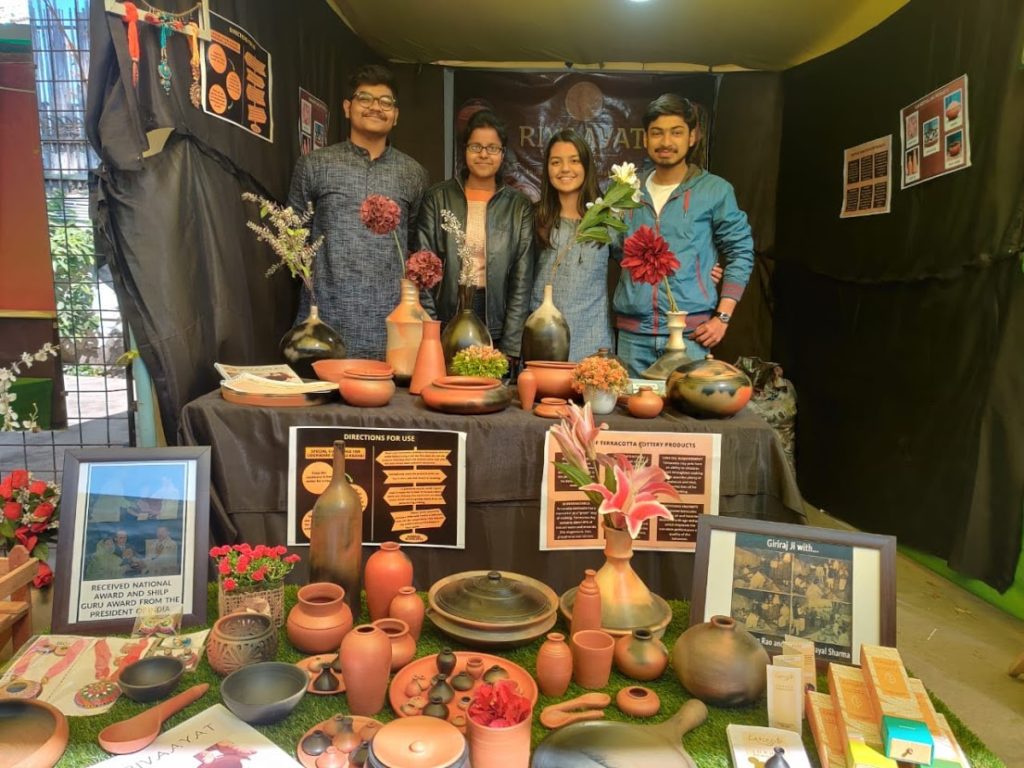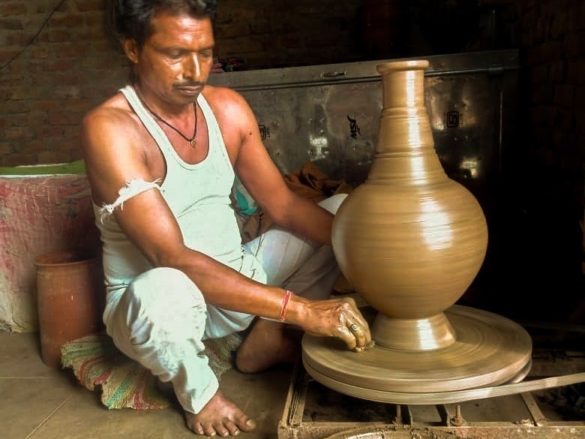Youth for Sustainability Dialogues provides a platform for young people around the world to discuss their social impact projects, get guidance from experts and connect with peers from around the world. Youth are the torch bearers of the sustainable world we envision tomorrow. These dialogues allow them to engage in discussions and showcase their work in local communities. Through this platform, online sessions are organised every two weeks around a particular SDG theme.
The third session was organized on 12th November 2020 on the topic ‘Are traditional art forms a dependable source of livelihood?’. Practising arts handed down over generations is often not an economically viable option for artisans. New age materials, technology, cheaper rates often drive these arts to extinction. In absence of any organised activity in this sector and the products not being adequately sold, the likelihood of artisans taking up alternative livelihood looms large. They are moving from these traditional art forms to other livelihood options. So, through this session teams looked at what can be done to promote these livelihood activities and how can we safeguard our local cultural heritage.
Ms. Gopika and Ms. Gayathri were the experts for the session, Founders of Live with Art, India. They are 3rd generation art lovers and come from a family of art experts. Gopika being the head of art product and design and Gayathri being the head of marketing and sales, registered a firm called Live with Art. It’s a design art and craft company, through which they promote other artists as well, especially rural artists which also becomes a platform to showcase their work. The participants for the session were Irine Tessa Koeswandini from Helping Hand International, Indonesia and Tania Agarwal and Rohan Kohli from Connecting Dreams Foundation, India.
A total of two teams presented their projects. The first team to present was Project Rivaayat from Connecting Dreams Foundation, India. After that, Sekura Art was presented by Helping Hands International, Indonesia.
Project Rivaayat: India, a country with rich historical backing and home to more than a thousand craft forms is known for its beauty and diversity all across the world. Pottery, one of India’s oldest art forms has been reflected in its culture and diversity since the past twenty thousand years. But once an illustrious craft, today it struggles for survival. The people who created the Identity of the nation are now struggling for their own. With the passage of time, earthen pots have been replaced with metal and glass pots. The Kumhar Colony (Potter’s Colony) in Uttam Nagar, one of the largest hubs of potters in India now lies in the shadow of its former glory. The torchbearers of this tradition have been reduced to mere labourers.
To address this issue, Team SRCC did a survey in Uttam Nagar and they realised that potters earn only about INR 5,000 to 10,000 per month which is hardly enough to cover their daily expenses. Exploitation by middlemen, cut-throat competition and outdated designs were some of the problems faced by the potters. The emergence of cheaper products like plastic has also reduced their work. They are being forced to give up their passion and change their line of work.
Thus, to revive this dying and fading art form of Terracotta pottery, Team SRCC started with Project Rivaayat. Rivaayat, the Indian word for ‘tradition’ is a signal of hope and light for millions of craftsmen across the length and breadth of the country. Drawn in the ancient lanes of Kumhar colony, Rivaayat was formally launched on 16th of November, 2019 under the guidance of Shri Giriraj Prasad, a national awardee in the field of Terracotta pottery.
The team collaborated with professional designers which helped in creating a broader portfolio of 50 plus products ranging from cutlery to home decor. The team also listed the products on 15+ online platforms such as Flipkart, Etsy etc. In a short span of 11 months, they have been able to showcase their products in 50+ exhibitions. They also made their presence felt overseas by collaborating with organisations in UAE, UK and USA to display their products internationally. Today, they have 9+ potters on board.
In future, the team aims to expand their family of potters by creating a self-help group for all of them under one umbrella. During the lockdown, the team invested in social media marketing which helped the potters gain orders across India. As Rivaayat strives to revive, re-discover and re-establish the art form it is acclaimed as one of the best entrepreneurial initiatives at various prestigious institutions. An idea that was conceived in the narrow lanes of Uttam Nagar has rekindled hope in the lives of potters.


Team Helping Hand International: The team started a project based on Sekura Art in Indonesia. Their motto is ‘We Do Not Sell, We Empower.” Their art is a collaboration of Crative Community and Tapis Craftsmen Community. The main reason for the inception of this project was that there was a lack of market, lack of financial support, creditor and distributive monopoly and ancient design and process. The team developed the product day by day. From the product design to the material and the brand image, the product was made. They tried to combine various strategies for their product and tried to make it as colourful as possible.
The sales strategy of the team was: social media promotion, collaboration with local government, hotels, resorts and tourism and also a joint venture with a gallery or a store. For human resource development, they opened new business opportunities and empowered native women and youth from the villages. They also developed a new technique without changing the traditional identity and created a new generation of craftsmen and cultural conservation. The vision of the project is to develop potential and creativity of the community, especially the youth regarding social, cultural and creative content. Their mission is to make various platforms and activities that can support the craftsman’s skills and create economic opportunities for them.
The team also created a cultural village which is one of the local events. They engaged with the government and companies to fund the village of the craftsman. They also have a Film Project coming soon to promote the craft through more engaging means. They also got an opportunity to make a national symbol in the Central station of Netherland as a beautiful wall mural in the style of Sekura Art. The products of the team usually take the concept of regional stories or legends from those in their area. On special occasions, they use leftover cloth to be reused into new clothes hence promoting sustainable fashion. Overall, the team sold 50 pieces for 4200 US dollar to support the craft.
The future plan of the team is to open a new cultural village, improve the quality of the community, cooperate with the government and other stakeholders, work on product and marketing innovation, increase collaboration and look for funding to support their venture.
The session ended with a question-answer session by the experts and a vote of thanks to the participants, organizing partners and the participants for their valuable time.


Get in touch with Connecting Dreams Foundation SRCC Chapter –
Instagram , Facebook
Get in touch with Helping Hands International Indonesia –







